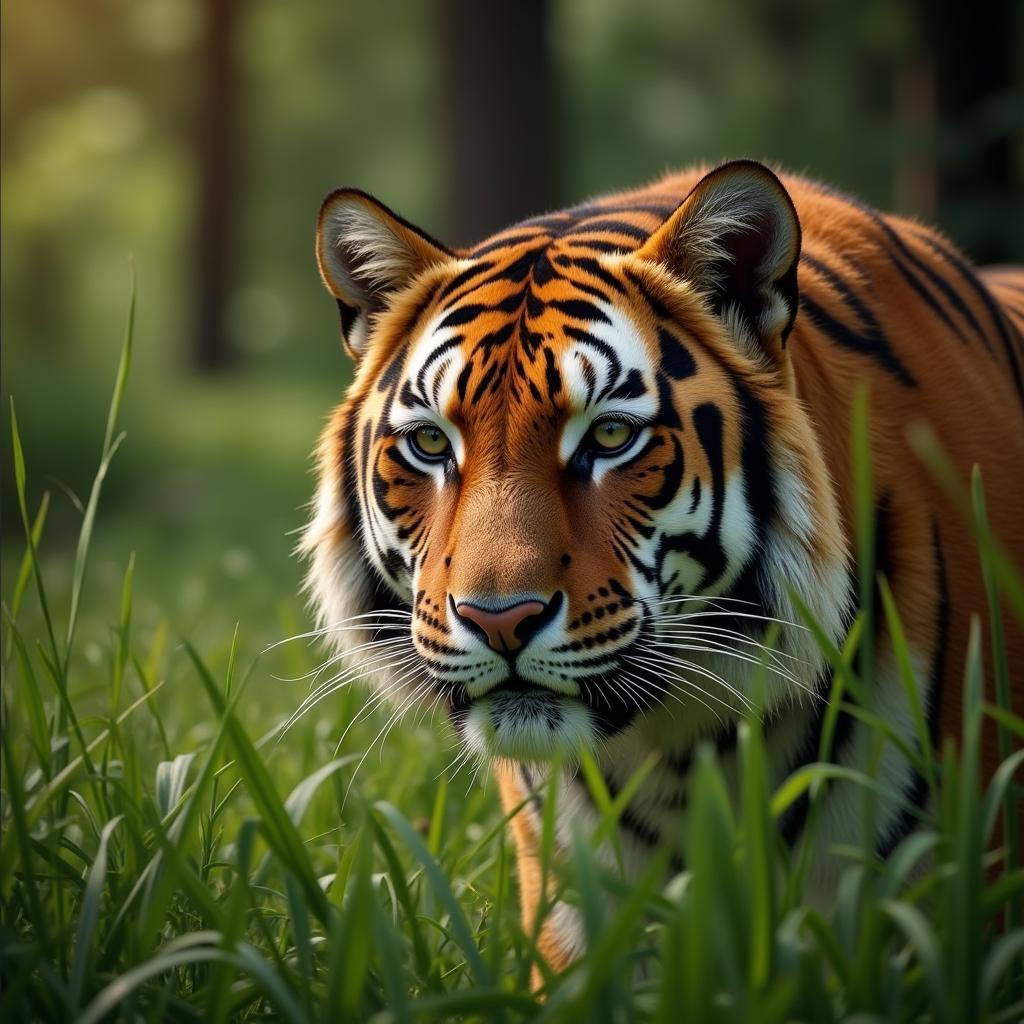Tigers, majestic and powerful predators, are instantly recognizable for their striking stripes. But what color are tigers, exactly? The answer is more nuanced than simply “orange and black.” This article delves into the fascinating world of tiger coloration, exploring the variations, the science behind their stripes, and the evolutionary advantages they provide. Learn more about the captivating hues of these magnificent creatures.
Decoding the Tiger’s Palette: More Than Just Orange and Black
While the classic image of a tiger features a vibrant orange coat with black stripes, this isn’t the whole story. Tiger coloration varies depending on the subspecies. The Bengal tiger, for instance, typically boasts the iconic orange and black, while the Siberian tiger often displays a paler orange, sometimes even leaning towards a tawny hue, with thinner, more widely spaced stripes. Then there are the white tigers, a rare genetic variant with white fur and dark stripes. Even the shade of orange can differ significantly between individuals within the same subspecies. This diversity in coloration adds to the mystique of these magnificent felines. You can learn more about the different shades of orange by exploring what color does black and orange make.
Did you know the color of a tiger’s stripes and coat can influence its ability to camouflage effectively? This allows them to blend seamlessly into their respective environments, whether it’s the dense jungles of India or the snowy landscapes of Siberia.
 Tiger Color Variations: Bengal, Siberian, and White Tigers
Tiger Color Variations: Bengal, Siberian, and White Tigers
The Science Behind the Stripes: A Masterclass in Camouflage
Why do tigers have stripes? This seemingly simple question has intrigued scientists for years. The primary function of the stripes is camouflage. In their natural habitats, the dappled light filtering through foliage creates patterns of light and shadow that mimic the tiger’s stripes, allowing them to blend seamlessly into their surroundings. This makes them virtually invisible to their prey, giving them a significant advantage when hunting.
What is the color of the tiger’s stripes on their underside? Interestingly, a tiger’s belly is typically white or cream-colored. This countershading helps them blend in further, as the lighter underside reduces the shadow cast by their body, making them less noticeable from below.
 Tiger Camouflage in Habitat
Tiger Camouflage in Habitat
Why Are Tigers Orange? The Evolutionary Advantage
The orange coloration itself plays a crucial role in a tiger’s survival. While it may seem conspicuous to us, many of their prey animals, such as deer and wild pigs, have dichromatic vision. This means they see the world in shades of blue and green, making the orange of a tiger appear less vibrant and more like a greenish-brown, allowing them to blend in with the forest floor. This unique adaptation provides tigers with a significant hunting advantage. Want to know more about the significance of color? Discover the deeper meaning of brown with what does the color brown mean spiritually.
The Enigma of the White Tiger: A Genetic Marvel
White tigers are not a separate subspecies but a result of a rare recessive gene. Their white fur and dark stripes are caused by a lack of pheomelanin, the pigment responsible for the orange color in typical tigers. While stunningly beautiful, white tigers face certain challenges in the wild due to their reduced camouflage. Learn more about another fascinating color question: what is the birthstone color for gemini? For further details on tiger coloration, explore what is the color of the tiger.
What Is The True Color Of a Tiger?
So, what color are tigers truly? The answer depends on the subspecies and even individual variations. While orange and black are the most common and recognizable colors, tigers can range from pale orange to tawny and even white. Their stripes, a masterpiece of natural camouflage, are essential for their survival in the wild.
FAQs: Unraveling the Mysteries of Tiger Coloration
- Are all tigers orange and black? No, while this is the most common coloration, variations exist depending on the subspecies, including paler oranges, tawny hues, and even white.
- Why are white tigers white? Their white coloration is due to a rare recessive gene that inhibits the production of pheomelanin, the pigment responsible for the orange color.
- Do tiger stripes serve a purpose? Yes, the stripes act as camouflage, breaking up the tiger’s outline in their natural habitat and making them less visible to prey.
- What color is a tiger’s belly? Typically, a tiger’s belly is white or cream-colored, which further enhances their camouflage through countershading.
- Why is the orange color advantageous for tigers? Many of their prey animals have dichromatic vision and perceive the orange as a greenish-brown, making the tigers less conspicuous in the forest.
- Are there any other color variations in tigers? Apart from the typical orange and black, and the white tiger, there are also golden tabby tigers, which have a lighter, almost golden coat.
- Do all tigers have the same stripe pattern? No, each tiger has a unique stripe pattern, much like human fingerprints.
For more information on tiger colors, you can read what is the color of the tiger.
Need Help with Colors? Color Box Hanoi is Here for You!
Whether you’re inspired by the majestic stripes of the tiger or seeking the perfect color palette for your home, Color Box Hanoi can help. We are experts in color, offering a range of premium paints and design services to bring your vision to life.
Contact us today for a free consultation! Call us at 0373298888, email us at [email protected], or visit our showroom at 86 Cầu Giấy, Hanoi. Our customer service team is available 24/7 to assist you.